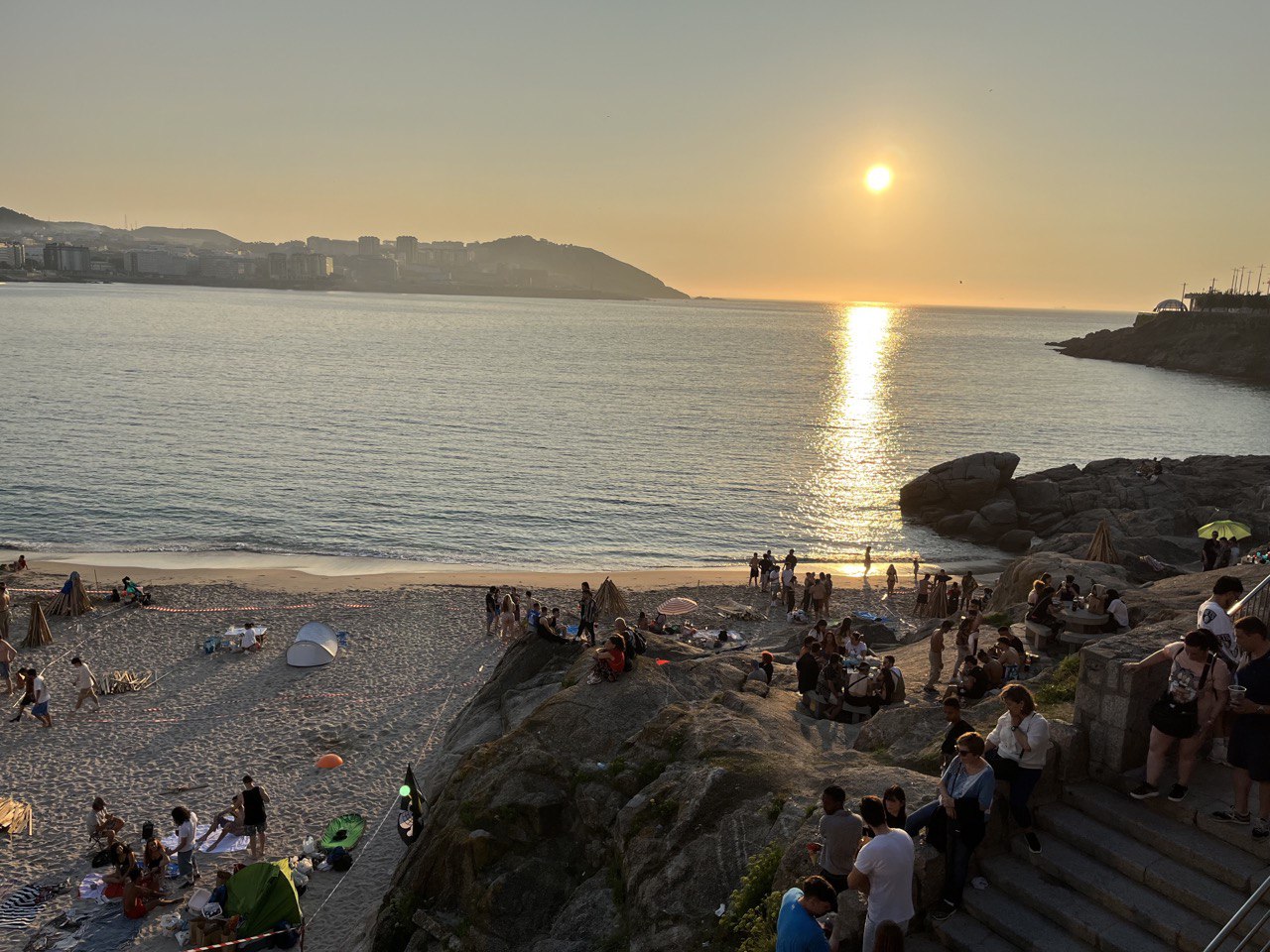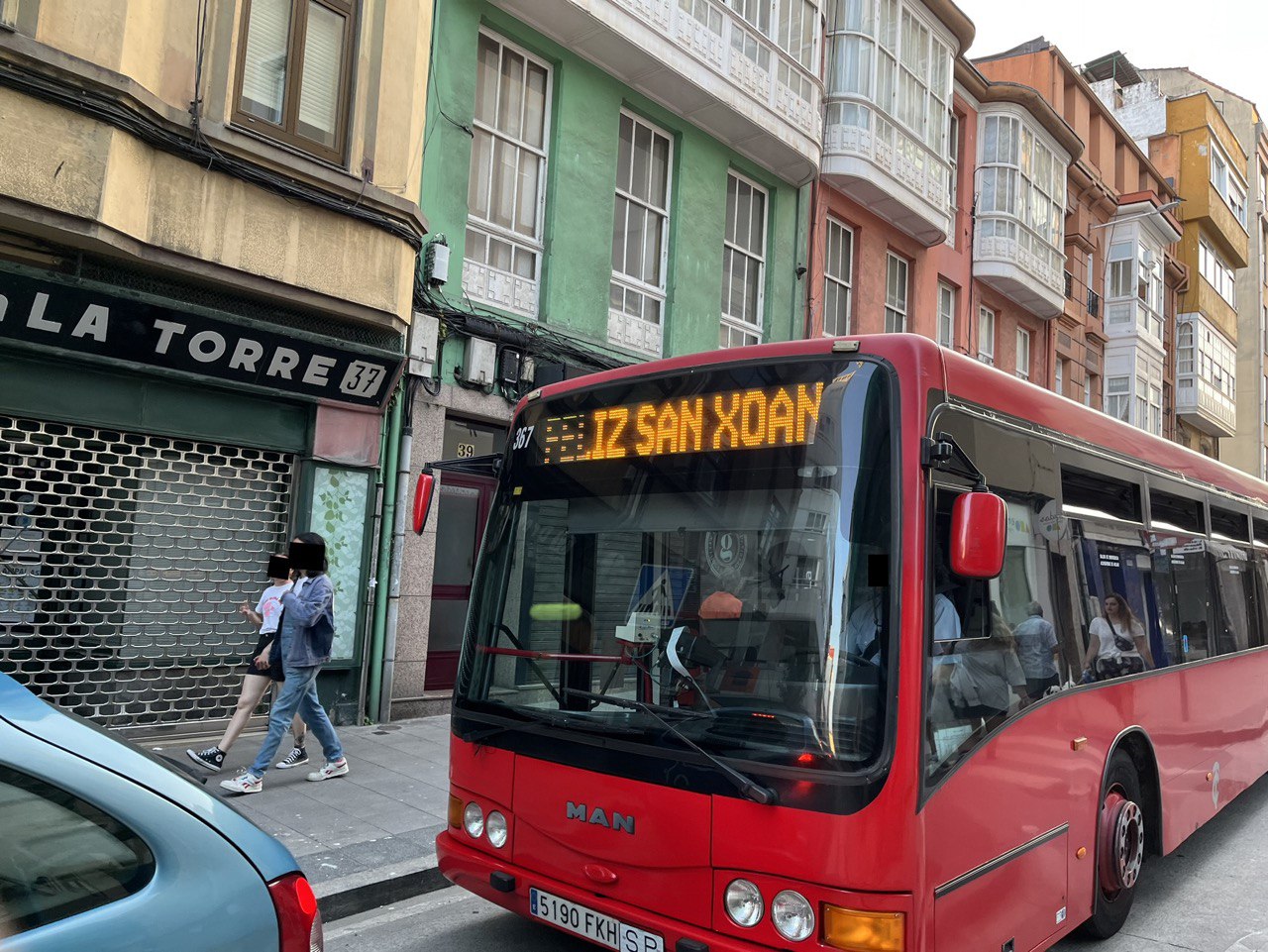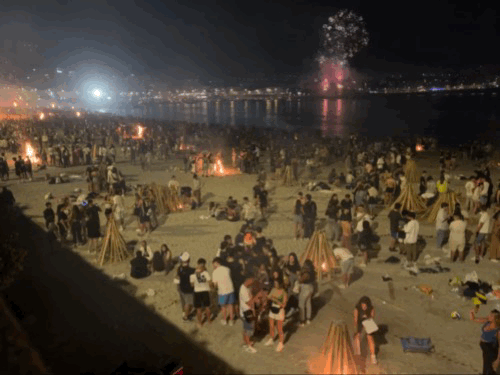On the evening of the 23rd of June, the people of A Coruña gathers to celebrate one of the most important and cherished traditions of Galicia (along with the rest of Spain), with mystic bouquets, grilled sardines, bonfires and fireworks.
The Spanish Midsummer
Noite de San Xoán (St. John’s Eve in Galician) is celebrated a couple of nights after the Summer Solstice and has its roots in what are believed to be Celtic rituals that used to be celebrated in the Iberian peninsula, which were eventually christianized to fit biblical accounts - in this case, the birth of St. John, celebrated on the 24th of June - when the Roman Empire adopted the Christianity as its official religion.
Despite its christianization, there are elements of the pagan celebration that continue to live on, such as lighting bonfires on St. John’ Eve as well as the tradition of washing one’s face with water infused with herbs on the morning of the actual feast day.

An Ancient Bouquet of Herbs
The day starts with purchasing a bunch of herbs gathered from the hills and sold on the streets of A Coruña.
Seven herbs are traditionally included in these bouquets, intended for use on the magical night to mount a potent defense against evil and also witchcraft (something that is said to have plagued Galicia); nonetheless, there are also those who include unconventional plants, such as blue hydrangeas, in the bouquets that they sell.

The bouquet is then immersed in a bucket full of water overnight (water that traditionally has to be from seven sources), and the resulting herb-infused potion is used to wash one’s face on the morning of St. John’s Feast Day.
The scent of the herb-infused water is nothing like I’ve ever come across before - it truly smells like an age-old potion, a heady, earthy aroma that evokes images of ancient peoples who used to wander in the woods and offer sacrifices to forgotten spirits. Dousing myself with the fragrant water felt like a sacred pagan act, one that felt almost like a forbidden ritual, and the exoticness of the experience was further enhanced by the coldness of the water that brought on a moment of hushed sensation upon making contact with my skin.
A City-Wide Party
In the hours leading up to sunset, an air of excited anticipation of the night’s celebrations fills the city, so thick that you can smell it - and yes, you do smell it: the delicious aroma of grilled sardines wafts through the air, so much so that it is general wisdom among the locals to close all windows at home before setting out to join the festivities.
The smell of grilled sardines is very similar to the smell of grilled salted fish (“tinapa”) sold in the streets of Manila, but what makes the experience so unique is that it permeates throughout large parts of the city that it sticks to one’s clothes and, in my case, my eyeglasses, that I continued to smell it even after taking a shower upon getting home.
Long, snaking lines for the traditional dish on the day (grilled sardines on bread) are seen everywhere on the evening, testing one’s willpower and determination. We decided to skip this part of the celebration, opting to feast our eyes on the merry scenes on the beach instead.
It is also worth noting that the celebration has such cultural significance that there are references made about it in pop music …
Te quise como a nada más, como al respirar. Te quise como el fuego al viento en una noche de San Juan.
El Primer Día del Resto de Mi Vida by La Oreja de Van Gogh
… and even city buses join in by greeting passersby with a simple message.

Bonfires on the Beach
The most anticipated event of the evening is the lighting of the bonfires, which line up A Coruña’s Orzán Beach. Participants, mostly made up of youth who have just wrapped up their final examinations, prepare bonfires and light them up just as the sun sets.

Laughter, cheers and endless chatter provide the background music for the scene, and is hushed (almost dramatically) as the fireworks start, accompanied by successive whooshing sounds as the bonfires burst into flames (most of them, at least, as some only manage to light a weak fire). The merriment builds up as people start dancing around the bonfires, the hypnotic orange flames stirring ancient memories stored deep within the soul that did not originate from physical experience, but from a spiritual one that endured throughout the ages.
One will be immediately brought back to the present as they see teenagers burning what appear to be sheets of paper (as can be seen in the foreground of the image in this section) - which, as explained to me by my husband, are actually their class notes - is a new development to this old tradition.
Keep the Fires of San Xoán Burning
This ancient tradition has adapted well throughout history, finding relevance even in radical changes in human lifestyle such as those involving religion and society, that it is only fitting that heirs of such tradition continue to preserve it.
